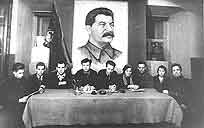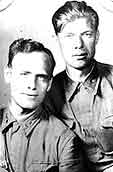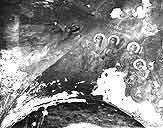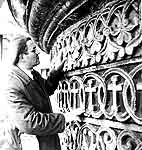The Main Steps of the Museum Activity (page 4)
 So, it was quite natural, that in 1941 the Zagorsk Museum (the town was renamed Zagorsk in 1930) acquired the collections of the Moscow Museum of Handicrafts (Volga area house carving, embroidery, costumes, Ugro-Finnish art of the Middle Volga Area), formed by the famous researchers of folk art I.P. Zvantsev, G.S. Maslova, V.N. Belitser.
So, it was quite natural, that in 1941 the Zagorsk Museum (the town was renamed Zagorsk in 1930) acquired the collections of the Moscow Museum of Handicrafts (Volga area house carving, embroidery, costumes, Ugro-Finnish art of the Middle Volga Area), formed by the famous researchers of folk art I.P. Zvantsev, G.S. Maslova, V.N. Belitser.

During the Great Patriotic War the most valuable collections, first of all, the collections of Old Russian art, were evacuated behind the Urals. Some part of the collection stayed on the territory of the Trinity-St. Sergius Lavra. For all the difficulties, in 1942, the Museum organized guided tours, in 1943 the Museum received 15712 visitors, in 1944 – 20081.

In the post-war time a new period in the Museum history began. In 1946 the male monastery and Moscow Theological Schools resumed their activity. The cathedrals were reopened for church services. Since that time the Museum occupied just a complex of buildings along the western fortress wall. The new conditions of the monuments functioning demanded active restoration of the architectural complex.
 It was carried out in co-operation with the Moscow Patriarchy. But they still followed the General plan of 1938. The ideas, expressed in that document, developed in the restoration works carried out under the direction of V.I. Baldin in 1950 – 1970. V. Baldin’s research were reflected in the complex project of the Lavra restoration adopted in 1963, which suggested the most expressive view of the monuments (the authors - V.I. Baldin, A.G. Ustinov).
It was carried out in co-operation with the Moscow Patriarchy. But they still followed the General plan of 1938. The ideas, expressed in that document, developed in the restoration works carried out under the direction of V.I. Baldin in 1950 – 1970. V. Baldin’s research were reflected in the complex project of the Lavra restoration adopted in 1963, which suggested the most expressive view of the monuments (the authors - V.I. Baldin, A.G. Ustinov).
|


